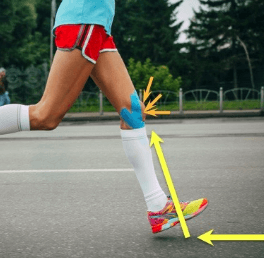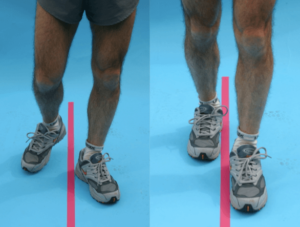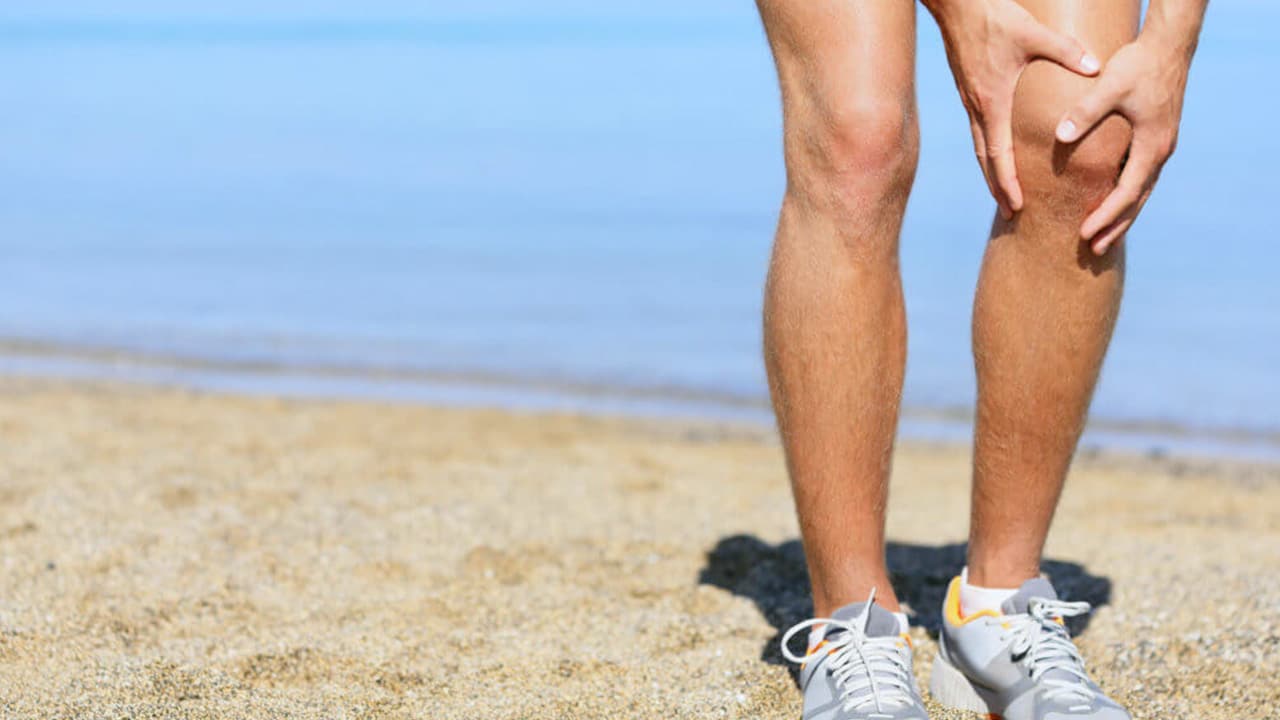There’s a reason why knee pain is often referred to as “Runner’s Knee.” Current statistics report that 30 – 50% of all runners get knee pain from running every year. That’s a pretty high number, and it’s one of the biggest reasons why running gets labeled as a high-injury sport.
I have my own take on running and it’s a little different. It’s that running is blamed for knee pain when it’s not actuality running that causes problems. It’s the way people run that leads to pain and injury. The truth is, if you can learn to run with proper running form, where there is minimal impact or undue stress to your knees, you’ll never have knee problems. It’s a surprisingly simple fix, and entirely possible, contrary to what many people believe.
Here are some ways to improve your running technique, avoid knee pain, and insure that you can run for many more years without ever having to give it all up someday because your knees are toast.

Avoid heel striking
Don’t over-stride and let your feet get ahead of you. Always make it a point to NEVER step past your knees, and learn to let your legs swing rearward, not forward. When your feet land in front of your knees, you putting on the brakes with every foot strike, sending a major impact to your knees, which were never designed to be shock absorbers.
Eventually, all of this impact to your knees leads to either joint pain or soreness in your muscles. If this happens to you, listen to what your body is trying to tell you, and change your stride mechanics, or you could end up on the bench.
What to do: Always lean from your ankles and let your stride open up behind you. Let your feet land beneath you instead of in front of you.
Don’t lift your knees when you run

That’s right. Pay no attention to the advice of all those running magazines that tell you to lift your knees and reach forward for a longer stride. That advice is intended for sprinters… and certainly not how you should run any distance longer than a mile. Lifting your knees, makes your feet hit the ground in front of your body and you’ll be putting on the brakes with every stride.
What to do: Keep your knees swinging low. At the back end of each stride, bend your knees and let your heels float up behind you. You should always be thinking, “knees down, heels up.”
Lean your entire body forward
Remember, anytime your foot comes down in front of your body, you’re putting the brakes and the shock of that deceleration is going straight into your knees.
What to do: Always try to land in a midfoot strike.
Keep your knees soft and bent
Many runners over-stride and then straighten their knees as they land. This creates an incredible amount of impact to the heel and the knee.
What to do: Make a pact with yourself that you will never again straighten your legs when you run. Problem solved.
Keep your feet aimed in the direction you are running
If your feet splay it can create knee pain because you’re torquing your knee with every foot strike. Imagine someone grabbing your ankle and twisting it to the outside 1200 times every 10 minutes!
What to do: Always run with your feet pointed in the direction you’re headed. Rotate your entire leg inward towards your centerline until your feet are parallel and pointing forward. This can permanently fix your problem by strengthening your adductors to realign your legs. Then, your knees will hinge in the direction they were designed to, instead of twisting as they bend. Foot splay can create inflammation in the iliotibial band which, at its lower end, attaches to the tibia just below your knee. The misalignment of your legs can often be mistaken for a knee problem.
More to do: Increase the amount of medial rotation of your legs over a number of weeks to give your legs time to adjust to their new direction of movement. Changing the biomechanics of your body takes time and persistence, but it’s well worth it if you want to never have knee pain again.
Don’t rely on cushioned shoes to fix your knees
It’s always better to fix a running form problem from the inside out. For this reason it’s better to adopt proper running form, rather than rely on cushioned running shoes, which can actually exacerbate knee problems. My favorite brands are Xero Shoes and Lems!
What to do: Go for low-profile neutral shoes and run with a shorter stride to reduce impact. Allow your body lots of time to make the necessary adjustments toward a softer landing.
Taking good care of your knees should be a high priority, especially if you want to continue to enjoy running year after year. Reducing torque and impact are the two best places to work on your running form. This is how you begin to build a life insurance policy for your knees, and they’ll thank you every time you lace up.
[thrive_leads id=’5826′]


